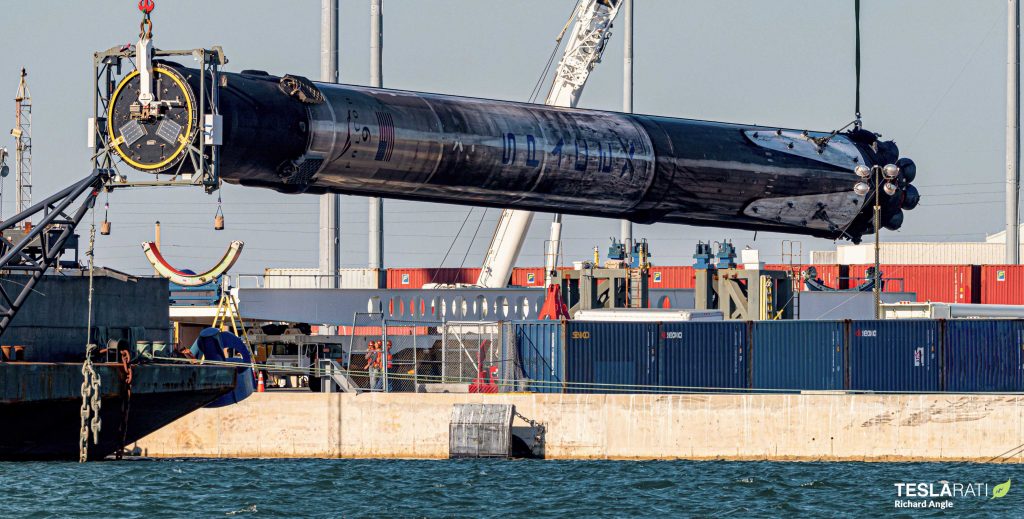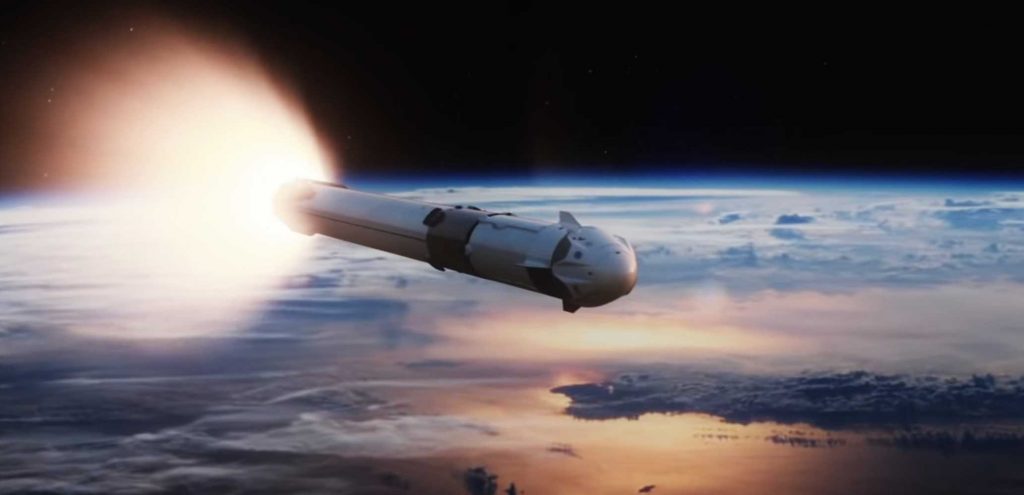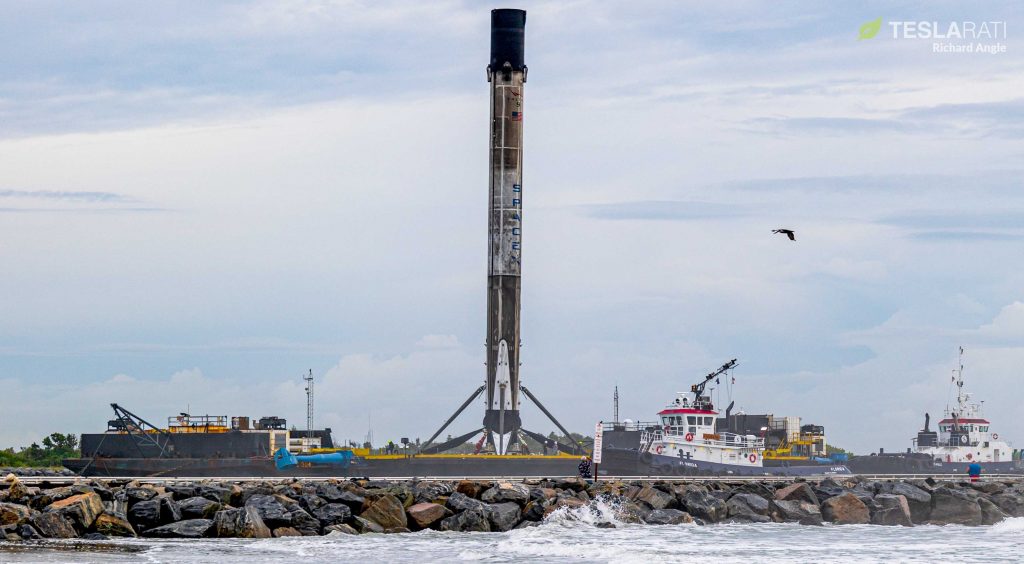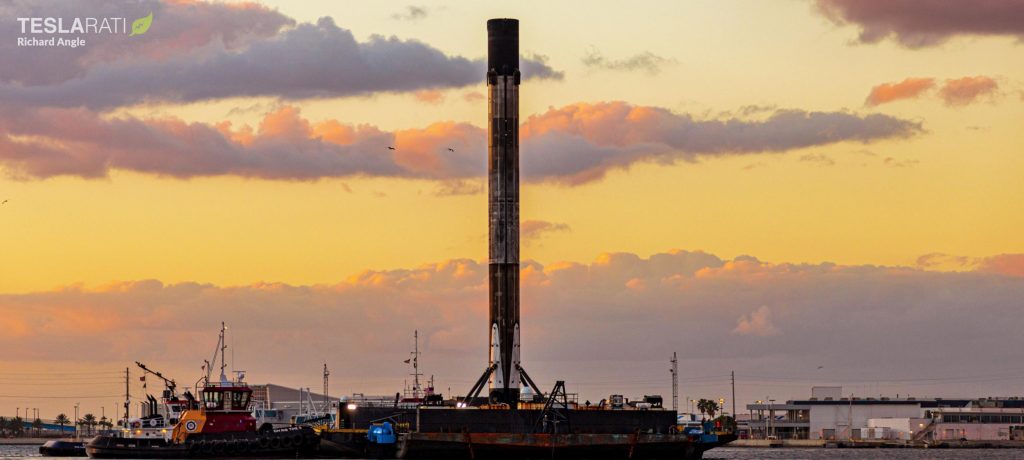If everything goes as planned, SpaceX’s next 60-satellite Starlink launch will soon push the Falcon rocket family to the halfway point of its ambitious reusability design goals.
SpaceX has scheduled its sixth launch of 60 Starlink satellites no earlier than (NET) 9:42 am EDT (13:42 UTC) March 14th. Known as Starlink L6 or Starlink V1 L5 (referring to the fifth batch of upgraded v1.0 satellites), the Starlink mission will be the SpaceX’s fourth this year – a cadence that would enable up to 21 Starlink launches in 2020 alone. In other words, a successful launch this weekend would put SpaceX firmly on track to realize the repeated guidance that it would attempt 20-24 Starlink missions this year.
Given that SpaceX’s annual record stands at 21 launches and that the company has many additional non-Starlink launches planned for 2020, it’s always been clear that rocket reusability would be essential to even begin to approach the launch rates Starlink demands. Doing so without severely impacting customer missions – almost certainly an unacceptable tradeoff for SpaceX – is even more of a challenge. Thankfully, with its very next launch, SpaceX is about to push the rocket reusability envelope yet again, hopefully proving that the Falcon family is halfway to realizing its design goals.

SpaceX’s final iteration of the Falcon launch vehicle – known as its Block 5 upgrade – flew for the first time in May 2018 and has performed another 27 missions in 22 months since. When it debuted, SpaceX CEO Elon Musk spoke in depth about the Block 5 upgrade and the significant changes it introduced, stating that it primarily focused on improving reliability and reusability. Notably, every single Falcon 9 Block 5 rocket produced from then on would be virtually identical to the select few boosters destined to launch astronauts, meaning that all future SpaceX launches would directly benefit from the changes NASA required.

However, arguably the biggest public focus of Block 5 upgrade would be the upgrades it brought for SpaceX’s reusable rocketry program, with Musk describing it as a cumulative product of half a decade spent attempting to land rocket boosters. The big claim: Falcon Block 5 boosters would theoretically be capable of at least ten launches apiece with minimal to no repairs in between. After reaching 10-launch milestones, Musk further noted that boosters could potentially use periodical overhauls – much like modern aircraft – to achieve 100 or more launches apiece before retirement.
Eleven months after SpaceX launched and landed the same rocket for the third time, Falcon 9 booster B1048 became the first to complete four launches and landings, placing the first 60 Starlink v1.0 satellites in orbit in November 2019. Less than two months later, Falcon 9 B1049 matched its predecessor’s record, becoming the second booster to launch four times.


Now, according to Next Spaceflight, pathfinder Falcon 9 booster B1048 is scheduled to launch for the fifth time in support of Starlink L6 – a bit less than four months after it became the first SpaceX rocket to cross the fourth-flight milestone. Just days ago, SpaceX President and COO Gwynne Shotwell revealed that Falcon boosters might never need to fly more than ten times. Given that Falcon 9 Block 5 boosters were first and foremost designed to launch no less than ten times each, B1048 is now on the brink of reaching the halfway point of one SpaceX’s most ambitious Block 5 design goals.
If B1048 (and B1049 shortly after that) can prove that Falcon boosters can successfully launch five times, it’s hard to imagine any technical showstoppers that could prevent SpaceX from achieving its self-imposed ten-flight milestone. With SpaceX likely to attempt anywhere from 10-20 more Starlink launches this year, there will be no shortage of opportunities for Falcon 9 to continue pushing the envelope of reusability.
Tune in around 15 minutes before liftoff to catch SpaceX’s Starlink L6 launch live this Saturday, pending a successful Falcon 9 static fire test later today.
Check out Teslarati’s newsletters for prompt updates, on-the-ground perspectives, and unique glimpses of SpaceX’s rocket launch and recovery processes.

(adsbygoogle = window.adsbygoogle || []).push({});
<!–
–>
var disqus_shortname = «teslarati»;
var disqus_title = «SpaceX's next Starlink launch to mark biggest rocket reusability milestone yet [webcast]»;
var disqus_url = «https://www.teslarati.com/spacex-next-starlink-launch-biggest-rocket-reusability-milestone/»;
var disqus_identifier = «teslarati-133078»;

